Including the football ground at the airport, two hospital pitches, and one on a farm…
Pinkhill Park
Opened in 1928, Pinkhill Park was located to the north of Carrick Knowe Golf Course and initially served as home ground for Murrayfield Amateurs after they were forced to move from Western Park on Saughtonhall Drive.
Incidentally the Pinkhill Star team active in the late 1880s appears to have been a team based elsewhere, with club secretary R Dryden residing in Candlemaker Row in the Old Town and Pinkhill Station wasn’t opened until 1902. Pink Hill House and nursery – on the site of what is now the Holiday Inn car park – didn’t really appear on maps until long after 1887.
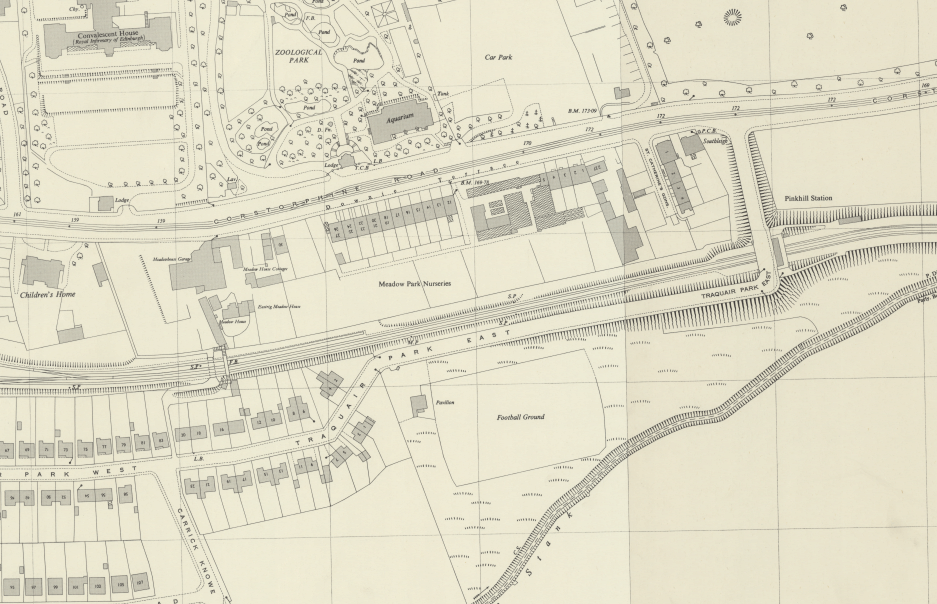
Interestingly, Civil Service Strollers, who began life in Stenhouse, reportedly moved to Pinkhill in the 1920s but newspaper reports have them playing home games at Wood’s Park in Portobello and also at the Gymnasium in Edinburgh, home of St Bernard’s, prior to 1920.
But Strollers were still playing at Stenhousemills, as the Evening News styled it, in late 1924 and given the club was founded as Edinburgh Civil Service FC, there may have been confusion as various entries refer to Edinburgh Civil Service, Civil Service, Edinburgh Civil Service Strollers, and Civil Service Strollers. It is likely that the club would have two teams; a senior XI and a junior or reserve side that might have initially taken the Strollers’ name.
Pinkhill survived until as late as the mid-1960s but with Civil Service Strollers having already moved to Muirhouse in 1957 and Murrayfield Amateurs no longer in existence, it made way for housing with one of the last recorded games held there the Logan Cup final between Blackridge Amateurs and Tweeddale Rovers. The West Lothian side trailed 3-1 going into the final ten minutes but stormed back to win 4-3 and lift the cup.
Western Park
There is a good chance that this ground was the same space known as Artillery Park in the early 1900s. The ground’s address is given as Saughtonhall Drive with matches played at Western Park between 1924 and 1928.
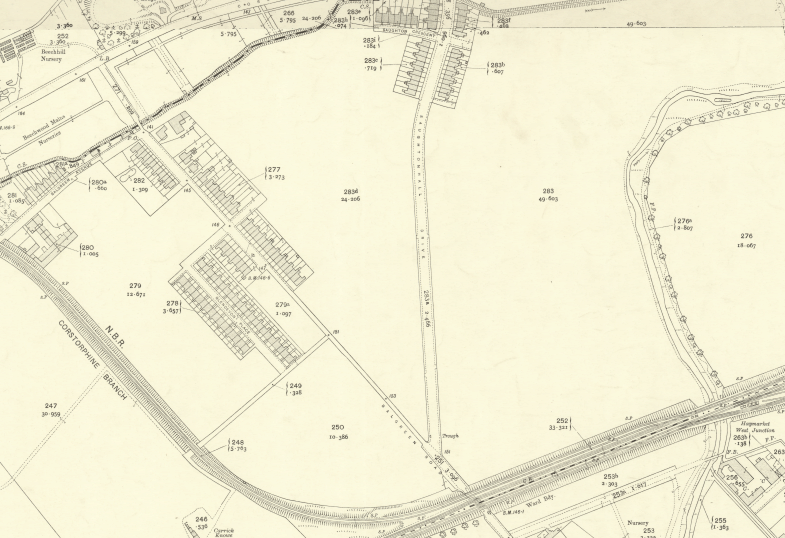
A reported crowd of around 3,000 turned out for the Logan Cup semi-final replay at the venue between Murrayfield Amateurs and Corstorphine Amateurs in May 1928, with Murrayfield advancing. This appears to have been the final game played at the ground before it was given over to housing.
The ground also appears to have been infrequently known as Western Terrace on occasion.
University Ground
From 1877 the space currently known as Union Park served as a sports ground for the University of Edinburgh with cricket, football, and rugby all played here in the latter part of the 19th century.
Unlike many parks that have survived such a length of time this ground has remained largely unchanged. There is still a pavilion on the southern side and rugby still takes place with Corstorphine Cougars, formerly Corstorphine RFC, based here.
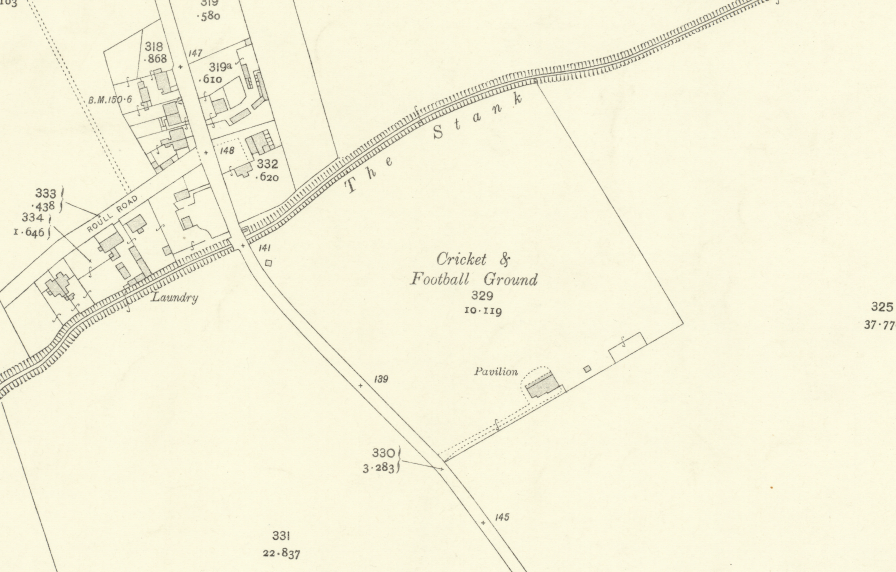
In the late 1870s some matches were still played under local rules, a mash-up of rugby and football, leading to scorelines such as one goal and two tries to one try.
Hearts and Hibs contested the Edinburgh Association Challenge Cup final here on March 29, 1879 with Hibs running out 2-0 winners.
But while some football was played here it was mostly used for rugby, especially in the early part of the 20th century. Royal HSFP played here briefly before moving to Jock’s Lodge and the Corstorphine Amateur Association formed in 1920, four years before the park was acquired by the city – and made use of the ground for sports including athletics, cricket, and hockey as well as football and rugby. It disbanded in 1939 with the outbreak of World War II.
Turnhouse
Perhaps unsurprisingly, football was played at Turnhouse while the RAF squadron was based there.
The 603 (City of Edinburgh) Squadron formed a football team during their time at Turnhouse, generally referred to as Turnhouse RAF, and lost 4-2 in a match at “the aerodrome ground” in December 1926, beaten by a team from A and R Tod’s, Leith; a flour mill on Commercial Street.
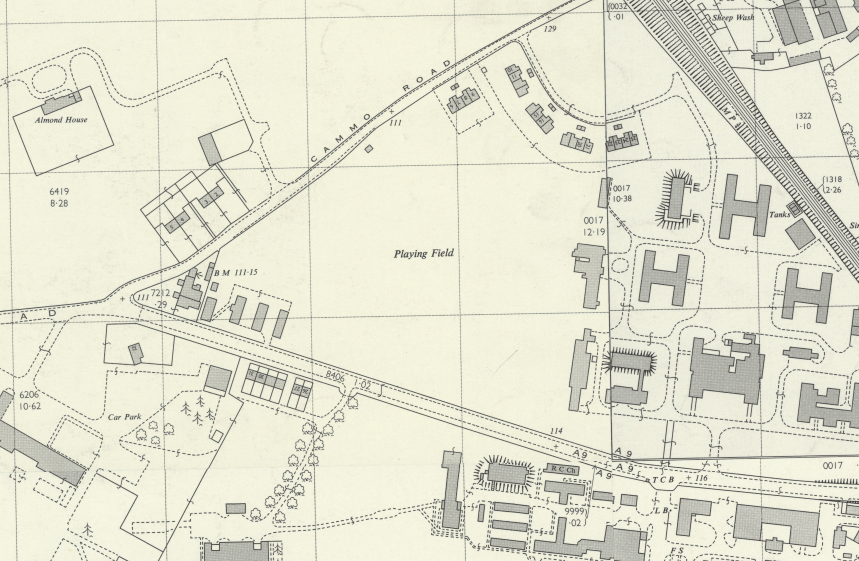
They also competed in the Clincher Cup in 1927, going down 3-2 to Oakbank Thistle.
There is very little in the way of records of the team playing many more matches although the ground appears to have been used up until the 1950s for Air Training Corps (ATC) matches.
Despite the significant changes in both the airport and the surrounding landscape, the playing field remains in situ even today and can be seen from Turnhouse Road and Lennymuir.
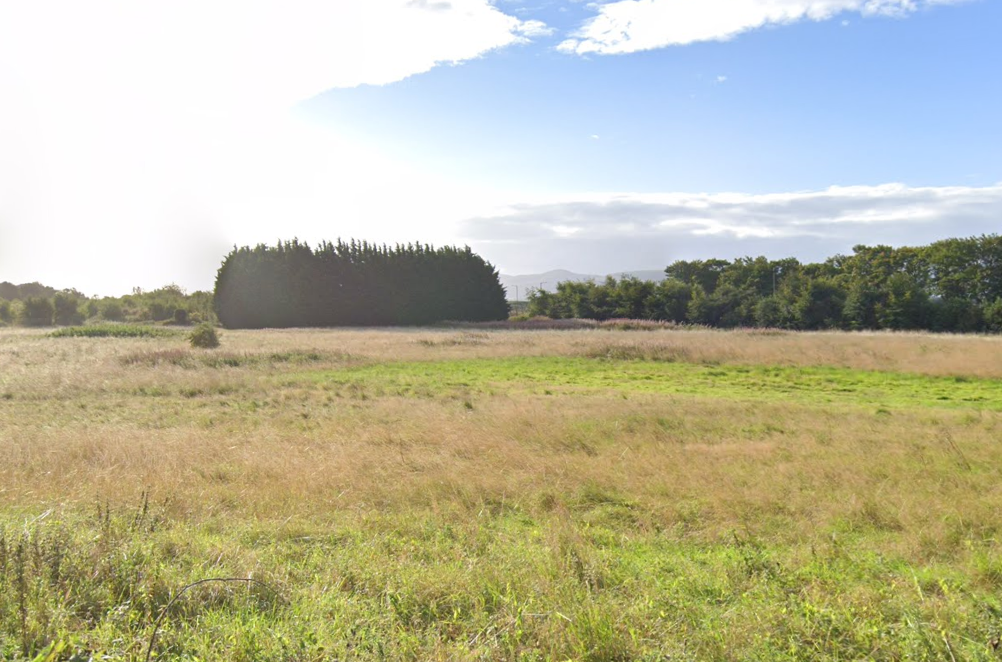
Clerwood Park
Used concurrently by Clerwood Amateurs and Corstorphine Amateurs during their time in the amateur ranks, Clerwood Park was almost certainly part of the grounds of Clerwood House which was built by Robert Tod – the R Tod in the name of the team that played the RAF at Turnhouse.
In 1864 Tod feud around 26 acres of land on the Clermiston estate with a stipulation that any house constructed on the land must cost a minimum of £1,000 and include coach house, stables, lodge, and offices. Tod was a wealthy Leith-based merchant and owned several businesses including the flour mill on Commercial Street.

Clerwood House – now the headquarters for the General Teaching Council of Scotland – was constructed in the mid-1860s with the Tod family moving from their previous home in Ratho. One theory behind the move to Clerwood links with the last man hanged in Scotland, as Lost Edinburgh details below:
“The family move to Clerwood is likely to have been precipitated by a traumatic incident that took place in Ratho Villa, the previous Tod family home in Ratho, when Jane Seaton, the children’s nursemaid, was brutally murdered by George Bryce, a local man in 1864.
“Bryce was courting Isobel Brown, the family cook, until Jane Seaton, convinced that he was not to be trusted, warned her against him. This so enraged Bryce that on the morning of 16 April 1864, having made certain that Mr Tod had left for his business in Leith, he entered the house, pushing past Brown, who pleaded with him to leave, and ran upstairs to the day nursery where he set upon Jane Seaton, pinned her to the floor, and threatened to kill her.
“On hearing raised voices, Mrs Tod seized an umbrella and attacked Bryce, beating him across the hands until he let Seaton go. Then, gripping Bryce by the wrist, she urged her to run for help, but Bryce broke free, pursued Seton, and attacked her with a razor: Seaton died instantly.”
Tod’s wife Margaret and his 11-year-old daughter, also Margaret, were witnesses at Bryce’s trial. The accused was sentenced to death and hanged on June 20 1864 in front of a reported crowd of 20,000 in the High Street.
Robert Tod died in 1897 but bequeathed Clerwood House to his son Thomas. There is a Clerwood Park street not too far from Clerwood House but this is unlikely to have been the site of the ground as the original land appears to have been part of the Clermiston House, or Hillwood estates.
The park only appears to have hosted football between 1924 and 1934 and almost exclusively games at amateur level.
Belford Road
Long before it was known as Modern Two and comprised part of the National Galleries of Scotland, the grand building on Belford Road was the Dean Orphan Hospital, designed by Thomas Hamilton in 1831 and completed by 1834.
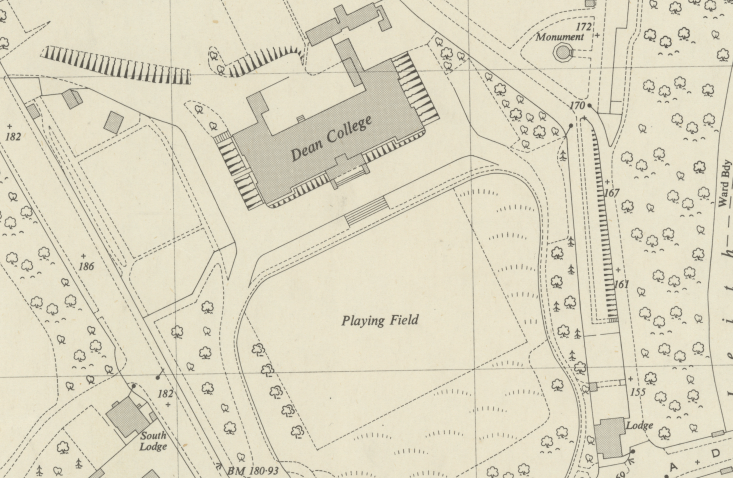
It became the Dean College or Dean Education Centre before being converted to a gallery in 1999.
Between the 1920s and 1950s a team competing in the Lothian Amateur Leagues played under the name of Orphan Hospital and faced the likes of Civil Service Strollers, Kirkliston, South Queensferry, Blackhall Athletic, and more.
Ravelston Park
Another amateur venue, Blackhall Athletic appear to have been the main tenants of this ground, playing in the Lothian Amateur Leagues around the same time as Orphan Hospital. The name of the team perhaps offers a hint as to the location of this ground – Ravelston Park is nearer Blackhall.

Ravelston Park is stil very much the same as it was a century ago – and football is still played here.
Blackhall Primary school, which is a short distance down the road, is one of the main users but a girls’ under-13 team who use the Blackhall Athletic name still play here.
Ravelston
Just to confuse matters, another ground used extensively for amateur football was Murrayfield Park – except it was nearly always known as Ravelston Dykes, or just Ravelston, because of its geographical location. Part of this might have been to distinguish from the Murrayfield Park in Blackburn, West Lothian but as was common for the time, many grounds had a number of different monikers for varying reasons.
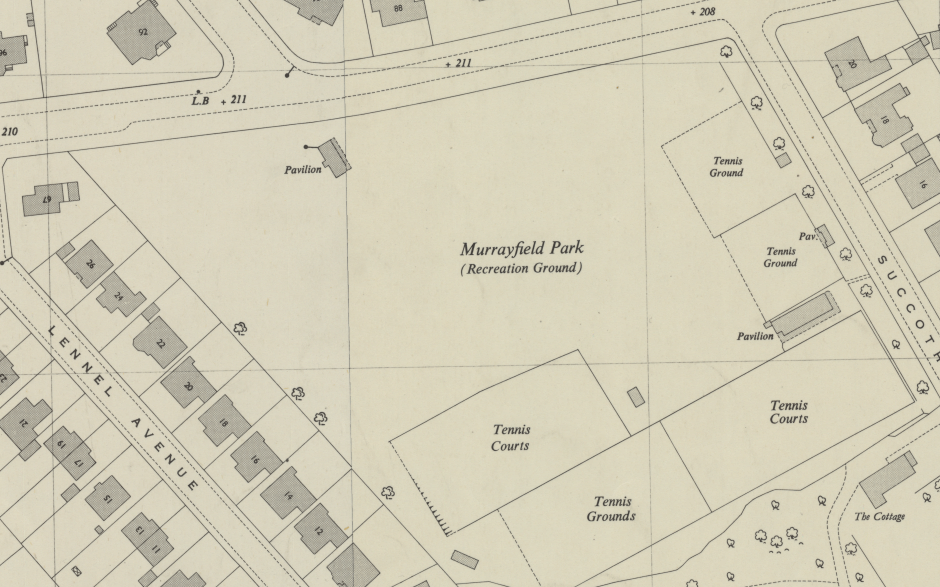
With space for four games to be played at the same time, it was an attractive prospect for teams struggling to find a ground of their own while it was also used as a neutral ground for cup ties.
Garscube Terrace
More or less adjacent to Ravelston / Murrayfield Park was Garscube Terrace with the earliest recorded game taking place in 1921 and matches taking place up until the 1940s – all at an amateur level.
While maps of the time indicate that there was no obvious space on the western side of the street, there was recreation ground on the eastern side – part of the grounds belonging to St George’s School for Girls.
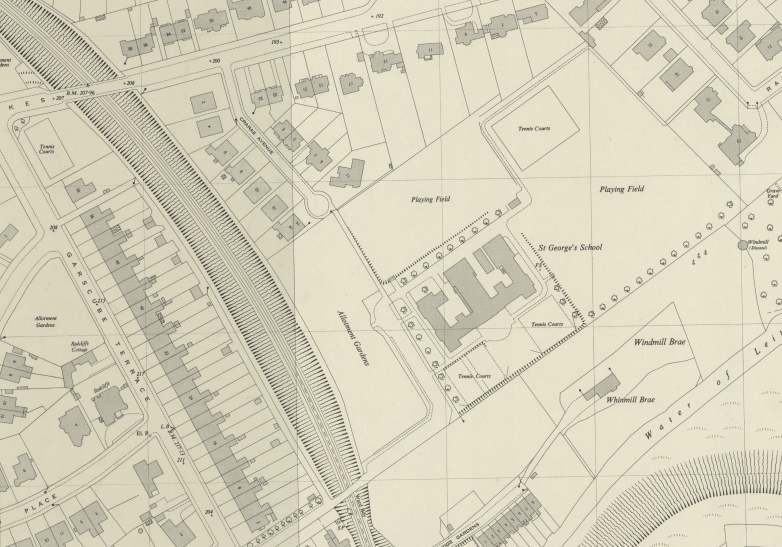
So many grounds were known by different names for various reasons but later reports make it clear that Garscube Terrace as a sports venue was in the grounds of the school.
Murrayfield Amateurs appear to have played some matches here and the playing field is still used today.
Gylemuir Park
This short-lived park played host to Gylemuir Athletic in the 1930s and the Gylemuir Care Home is built on what would have been the pitch.
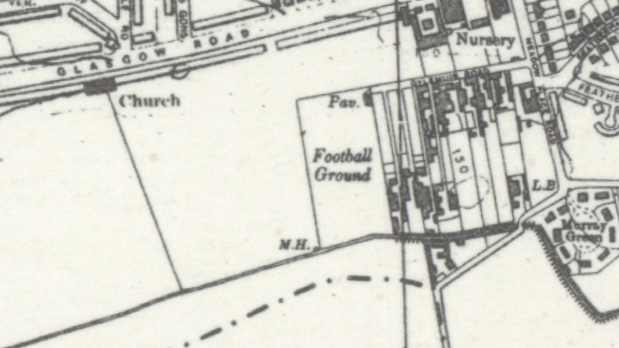
Gogarburn
In 1913 the Mental Deficiency and Lunacy (Scotland) Act was passed by parliament, giving statutory recognition to the distinction between mental illness and mental handicap. The Act required District Boards of Control to provide institution for the mentally handicapped separate from asylums which were to be used for treating the mentally ill.
The mansion house and estate of Gogarburn had previouly been owned by the Edinburgh Corporation and used to house convalescent and delicate children under school age. The Edinburgh District Board of Control bought the house and estate in the years following the passing of the Act and by the end of 1924 Gogarburn Hospital was open, housing 24 women and, by 1925, 15 men.
Stewart Kaye, the architect behind Bangour Village in West Lothian was enlisted to design a similar colony with an end goal of housing 1,000 mentally handicapped individuals.
Building continued throughout the Thirties with a school opened and Scout and Guide troops formed. By 1938 the hospital could care for 540 patients.
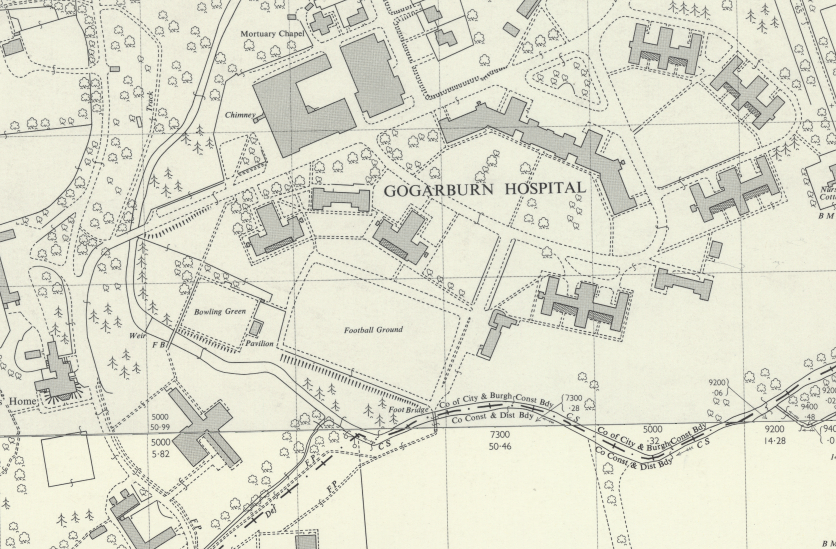
At some point either towards the end of the 1920s or early 1930s a football pitch was laid out in the grounds of Gogarburn.
Many of the matches appear to have been teams comprising hospital staff playing friendlies against amateur outfits or clubs competing in the Church League.
By 1932 Gogarburn had entered a team in the first division Amateur Lads League but it is unclear if this was a team linked to the institution or whether it might have been made up of players from the likes of Gogarmains, Gogarbank, and Gogar Farm.
There are also newspaper references to Gogarburn football club as well as Gogarburn Institution. Were these separate teams or merely different names for the same XI?
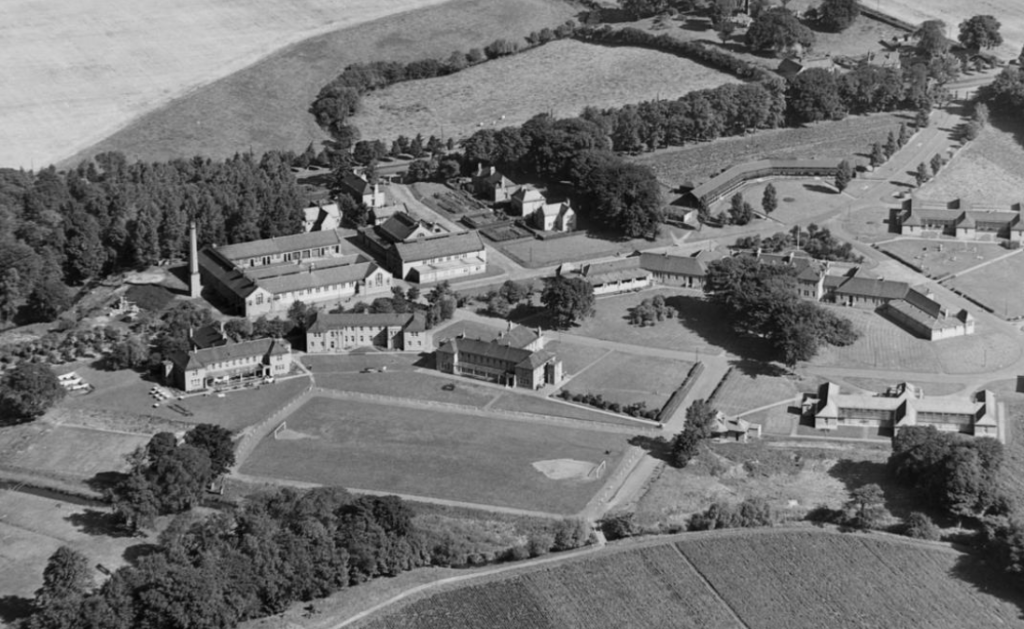
Further confusing is the reference to Gogarburn Amateurs although the number of times a Gogarburn team faced a side from Bangour suggests that it was indeed a staff team.
A Gogarburn Amateurs player known as T. Collins made the Evening News in November 1933 as he topped the Lothian Amateur scoring charts with 25 goals. By January 26 1934 he was on 37 and by February 9, 41.
In October 1934 the West Lothian Courier reported that Ritchie, Gogarburn’s left-back, was being scouted by an unnamed English league team.
Matches appear to have been played here up until late 1971, when a flooded pitch at the institution prevented a match between Gogarburn Hospital staff and an Army Cadet side from going ahead in what would have been the “lads’ debut into the factory league,” according to the West Lothian Courier.
Southfield Farm
I could find just one recorded instance of a match taking place here, but what a game it must have been. Haymarket Loco faced Gogarburn at this venue in December 1934, with a half-time score of 2-2. By the final whistle Gogarburn had run out 5-3 winners, Penman scoring a hat-trick and taking his tally to “nine goals in two games… a great feat for a 15-year-old youth.”
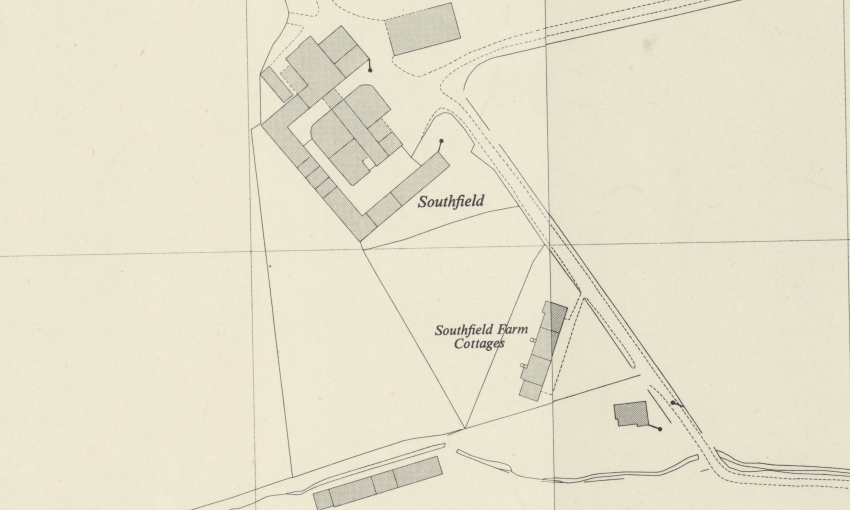
With such little information about additional games taking place here it is uncertain if regular matches were scheduled here or if this match was a one-off. As Haymarket Loco was an amateur team there isn’t a huge amount of detail about the team or a potential home ground. If they lacked a ground to call their own it would make sense that they would play games wherever they could get space.
Cramond Park
Another ground that seems to have been little more than a public park, Cramond Park was used virtually exclusively for juvenile games in the 1930s, with teams including Royal Botanic Gardens, Forth Athletic, Cramond Rosebery, and Leith Hibs all playing matches here.
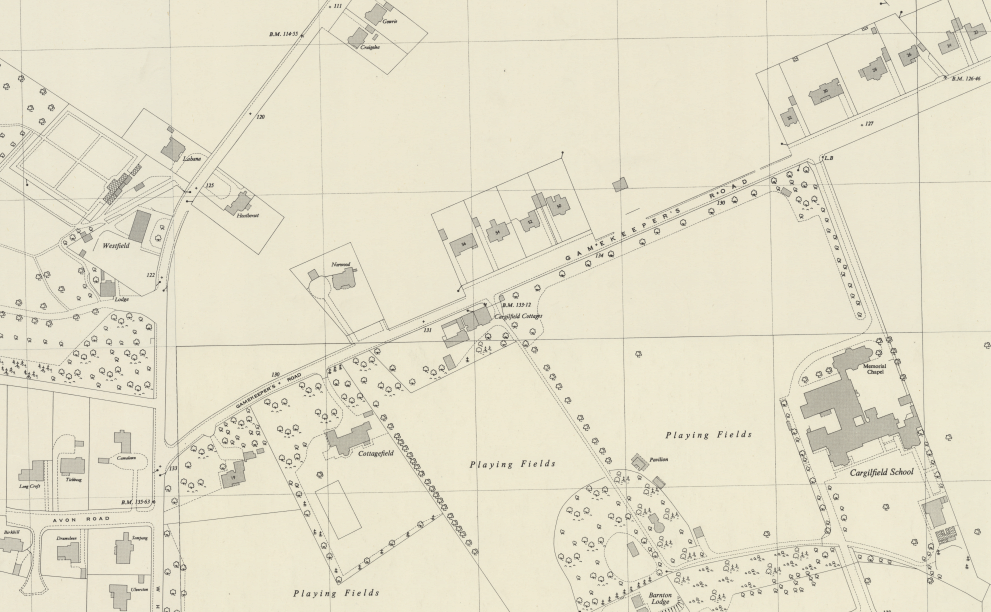
As it appears to have been little more than a public park there is no clear cut way of identifying its exact location on a map of the time. Chances are that it wasn’t part of the extensive playing fields at the Cargilfield school on Gamekeeper’s Road but it may have been on the other side of the street – Cramond Park the street was built on this site some years later.
Davidson’s Mains Park
Davidson’s Mains, Davidson’s Mains Park, or Davidson Park, as it was variously referred to in newspaper reports of the time was sited on Queensferry Road, with Quality Street running south to north along the east side of the park.
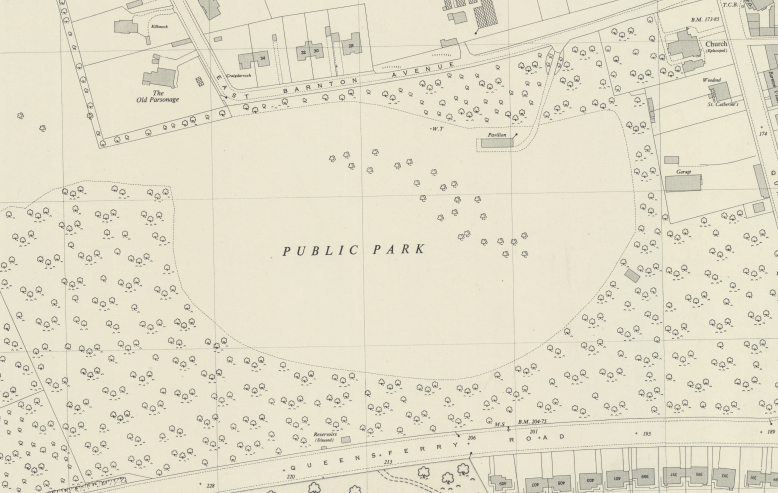
The space is still there today, and still used for football, having first hosted games as early as the 1880s. We know this thanks to a stern court report in the Evening News of Tuesday August 9, 1881 which details the fining of Mrs Shade, a Davidson’s Mains resident charged with “shebeening”.
The report states: “It appeared from the evidence that four young men had gone out to Davidson’s Mains on the Saturday preceding to engage in a football competition. They stayed in the village over the night, and on the Sunday, feeling a little dry, they got a little whisky, and afterwards went to Shade’s house, where one of the men ordered refreshment. They got several bottles of sweet ale for which they paid 4d a pint. Afterwards they got a round of bitter ale, a bottle of lemonade, and ginger beer. They had then a half-tumbler of what Mrs Shade called, ‘pick-me-up beer’.”
On one old map there seems to be a space marked for football on land now occupied by houses on Corbiehill Crescent and Corbiehill Place.
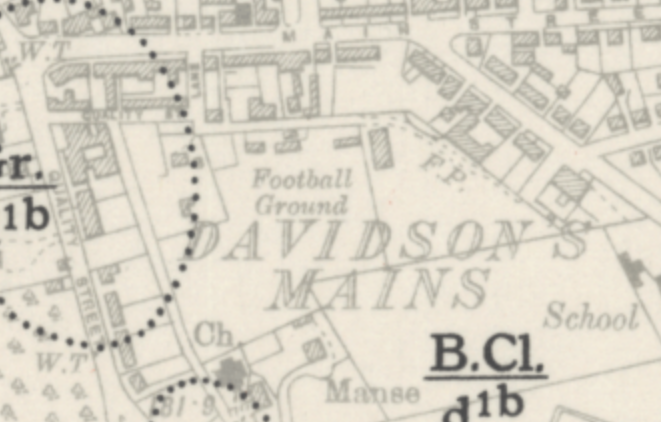
Muirhouse Rovers and Davidson’s Mains Violet were the main teams to play at Davidson’s Mains Park, although by the early 1930s the two teams appear to amalgamated to form Davidson’s Mains Muirhouse Violet. Incidentally a match report from March 1934 has them winning 5-3 against Leith Trinity in the Timpson Cup with the beaten opponents also sounding like an amalgamated team.
Another beautifully researched piece – great read. I’d wondered where Pinkhill was but other than knowing it was out Corstorphine way I knew nothing else (Leith Athletic played Edinburgh University there a number of times in their early years). Also fascinated by the info & picture of the ground at Gogarburn.
LikeLike
Hi,
Really interesting. On Gylemuir Park, in the eighties there was also a pitch parallel to the Primary School. Used by Tall Oaks YFC it ran lengthways from just off the road through to the Gyle pitches.
Now under the care home too I guess
LikeLike